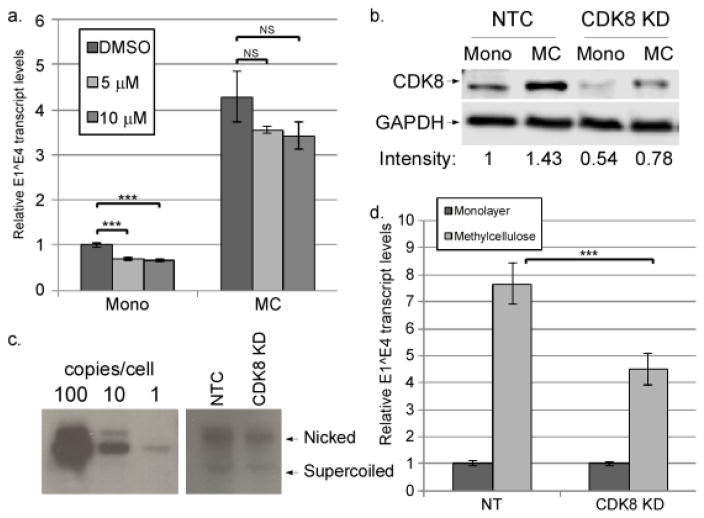Figure 7.
CDK8 contributes to late promoter activation, but not through its kinase activity. a. HPV16 cells were cultured for 24 hrs in monolayer or MC in the presence of the indicated concentration of senexin A or DMSO. Total RNAs were isolated and subjected to RT-qPCR analysis using primers specific for the E1^E4 spliced mRNA. Ct values were normalized to Cyc and then to the DMSO control. b and c. CDK8 was knocked down in HPV16-containing cells using CRISPR technology. b. A representative western blot of CDK8 levels in lysates from HPV16 cells infected with CDK8-CRISPR lentiviruses (CDK8 KD) or non-target control lentivirus (NTC) grown in monolayer (mono) or methylcellulose (MC). Relative CDK8 band intensities are indicated below the blots. c. A representative Southern blot showing HPV16 genome copy number in NTC and CDK8 KD cells. Copy number controls corresponding to 100, 10, or 1 viral genome copy per cell are shown. d. Total RNAs were isolated from non-target control or CDK8 KD cells and levels of E1^E4 transcripts were measured using RT-qPCR as in (a). Values represent the means of 4 (a) or 5 (d) experiments and bars represent ± 1 standard error of the mean. ***=P<0.01, NS=p>0.05.

